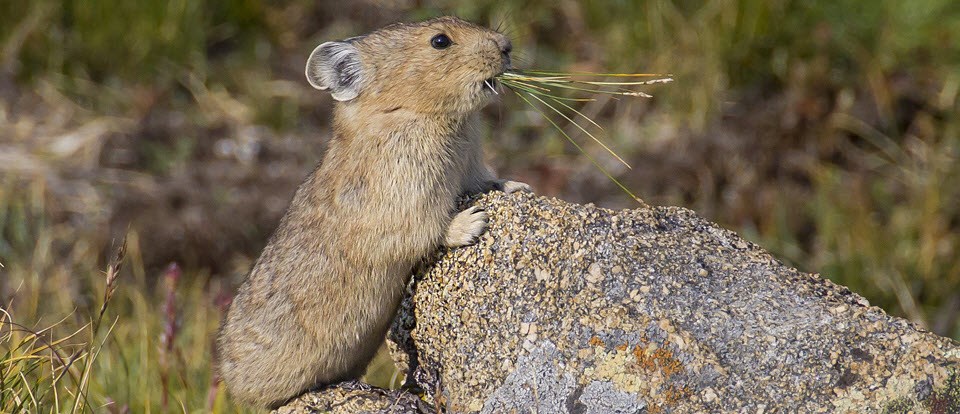
NPS / Ann Schonlau
Importance and Issues
- American pikas (Ochotona princeps) depend on mountain ecosystems and are extremely temperature-sensitive. Due to a high body temperature and low upper lethal temperature, pikas have difficulty thermoregulating and rely on crevices and cavities in rocks for cover and shade. They cannot tolerate high temperatures for more than a few hours. Pikas are considered early warning signs for warming in western North America.
- Localized extirpations of the American pika have been documented in isolated areas of their range, and some scientists believe that these extirpations may be due to increasing temperatures.
- Climate change is predicted to result in high summer temperatures and reduced snowpack in many areas, both of which are expected to negatively affect pikas and their habitat.
- Crater Lake and Lassen Volcanic national parks have typical pika habitat of high elevation talus fields. Craters of the Moon National Monument and Preserve and Lava Beds National Monument consist of lower elevation lava flows, but they also provide pikas with a unique habitat type.
- Long-term monitoring is essential for our understanding of pikas, and for their long-term viability in our parks.
Monitoring Objectives
- Determine the status of pika site occupancy at selected Pacific West Region parks.
- Determine the trend in pika site occupancy at selected Pacific West Region parks.
Pika Monitoring Videos
-
Pikas Living on the Edge: Monitoring a Species Facing a Changing Climate
Monitoring the American pika, a climate-sensitive species
- Duration:
- 5 minutes, 9 seconds
-
Pika Monitoring at Craters of the Moon National Monument and Preserve, Idaho
Monitoring the American Pika at Craters of the Moon National Monument and Preserve. Long-term monitoring is important to understand the pika's sensitivity to climate change, and to detect changes in pika populations over time.
- Duration:
- 4 minutes, 44 seconds
Source: NPS DataStore Saved Search 723. To search for additional information, visit the NPS DataStore.
Source: NPS DataStore Saved Search 719. To search for additional information, visit the NPS DataStore.
Source: NPS DataStore Saved Search 719. To search for additional information, visit the NPS DataStore.
Last updated: December 3, 2018

